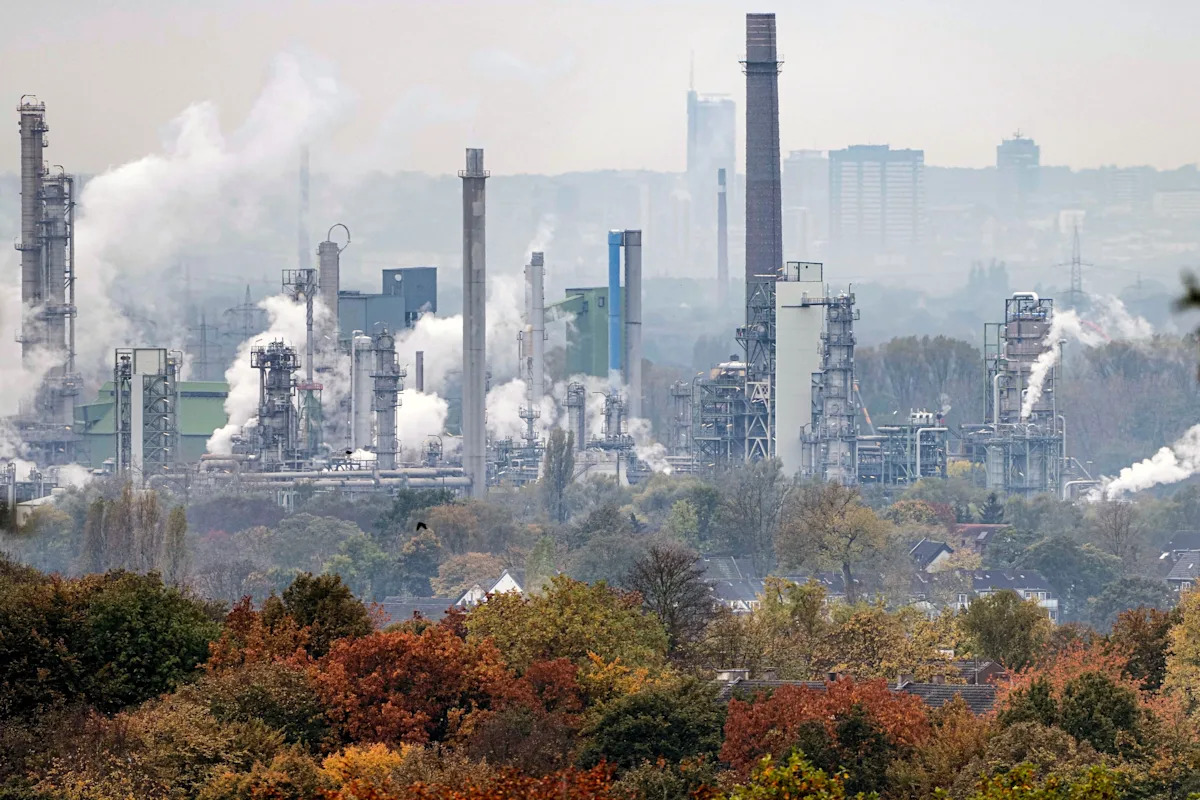BELEM, Brazil (AP) — In each of the last few years, scientists, analysts and officials had hoped this would be the year when emissions from burning coal, oil and natural gas would stop rising.
They will have to wait another year.
For the second year in a row, fossil fuel emissions rose 1.1% in 2025, scientists reported Wednesday at UN climate talks. It's not a big leap. This is one of the smallest figures in recent non-pandemic years. But negotiators gathered for the COP30 conference on the banks of the Amazon are trying to curb global warming by ensuring that fossil fuel emissions stop rising and then fall.
“It's disappointing that we haven't cut carbon emissions,” said University of Exeter scientist Stephen Sytch, a member of the Global Carbon Project, which uses data from around the world to calculate annual emissions figures and publishes them in two scientific journals. His colleague Glen Peters from the CICERO Center for International Climate Research in Norway called the rise in carbon dioxide emissions “inexorable”.
Going to the future where “we will cook”
A second report from another scientific team examined how much warming the world could expect given this year's carbon emissions and government policies. The Climate Action Tracker report shows that the past four years of efforts to combat climate change have not made much difference to projections for a hotter future. In fact, scientists found that the actions of US President Donald Trump's administration this year have added some warmth to their forecasts.
“If the political dynamics don't change, we'll be cooking. There's no doubt about it,” said Climate Analytics CEO Bill Hare, one of the report's authors.
Climate Action Tracker reported that the world is now on target for warming of 2.6 degrees Celsius (4.7 degrees Fahrenheit) above levels in the mid-1800s, a slight decline from last year's forecast of 2.7 degrees (4.9 degrees Fahrenheit), but much of that drop was due to changes in how scientists looked at China's numbers rather than due to new policies put in place.
The 2015 Paris Agreement set an international goal of limiting warming to 1.5 degrees Celsius (2.7 degrees Fahrenheit) since the mid-1800s.
Climate Action Tracker also examined projections based on each country's climate plans presented ahead of this year's climate conference in Belem, Brazil. According to their report, the future based on these promises looks one tenth of a degree warmer than a year ago. This is largely the result of Trump's abandonment of American efforts to combat pollution, says Ana Missirliu of the NewClimate Institute, an author of the report.
If countries do what they promise, the world will be on track to warm 2.2 degrees Celsius (4 degrees Fahrenheit) above levels in the 1800s, the report says.
Experts at the climate conference said they see hope and progress, but this year's emissions numbers are still painful.
“When I hear that emissions are still rising, I'm really concerned,” said former top German climate negotiator Jennifer Morgan.
2.7 million pounds of carbon dioxide per second
Carbon Project scientists predict that burning fossil fuels and making cement will release an additional 42 billion tons (38.1 billion metric tons) of carbon dioxide into the air this year. This is equivalent to nearly 2.7 million pounds (1.2 million kilograms) of heat-trapping gas entering the air every second.
This is more than double the emissions the world produced in 1983.
One bright spot, Sitch said, is that 35 countries have reduced their fossil fuel emissions since last year and are still thriving economically. But at the same time, the United States, which has previously cut carbon dioxide emissions from fossil fuels, emitted 2% more pollution in 2025 than in 2024.
China remained the same as a year earlier, giving scientists and analysts hope that emissions from the No. 1 carbon emitter may have peaked.
Air pollution from aviation increased by 6.8% from 2024 to 2025, the report said.
And the small increase in carbon dioxide emissions from fossil fuels was offset by large reductions in deforestation and other land use changes. Between land use and fossil fuels, Earth's total emissions were about the same as in 2024, the report said.
__
Melina Walling contributed to this report.
__
Associated Press climate and environment coverage receives financial support from several private foundations. AP is solely responsible for all content. Find hotspots standards for working with charities, list of supporters and funded coverage areas on the website AP.org.








